
Tomonobu Itagaki is a Japanese video game designer best known for creating the Dead or Alive series and also reviving the Ninja Gaiden franchise in 2004. Joining Tecmo in 1992, Itagaki produced two video game franchises that were commercial successes and earned him several promotions; he headed Tecmo's development team, Team Ninja, and sat on the executive board. He left the company after 16 years of service, filing a lawsuit against it for withholding bonus pay. He formed a new company Valhalla Game Studios with several Team Ninja members and released Devil's Third. The company dissolved in December 2021 and he has now formed a new one called Apex Games.
Ninja Gaiden is a media franchise based on action video games by Tecmo featuring the ninja Ryu Hayabusa as its protagonist. The series was originally known as Ninja Ryukenden in Japan. The word "gaiden" in the North American Ninja Gaiden title means "side story" in Japanese. The original arcade version, first two Nintendo Entertainment System games and Game Boy game were released as Shadow Warriors in PAL regions. As of 2008, the series has shipped over 7.7 million copies.

Ryu Hayabusa is a fictional character and the protagonist of Tecmo's Ninja Gaiden action-adventure video game series, in addition to featuring as a player character in the Dead or Alive fighting game franchise by Koei Tecmo and Team Ninja where he serves as the protagonist in Dead or Alive 2. He is a human-dragon hybrid who wields an ancestral weapon called the Dragon Sword, and is the leader of the Hayabusa Ninja Clan. One of Tecmo's most enduring characters, Ryu has appeared on official series merchandise as well as in the feature film DOA: Dead or Alive, and has made many crossover appearances in other games. He has received favorable reception from critics and audiences, and is considered to be one of the most iconic examples of a ninja character in video games as handful of critics have ranked him as gaming's number 1 ninja.
Dead or Alive (DOA) is a media franchise based on a fighting game series developed by Team Ninja and published by Tecmo. It is primarily composed of fast-paced fighting games that began with the original Dead or Alive in 1996. The series received critical and universal acclaim with the sequels Dead or Alive 2 in 1999 and Dead or Alive 3 in 2001, which are both considered landmark titles. Dead or Alive is the creation of Tomonobu Itagaki, who developed the first four installments but has since left the company and is no longer working on the series, which continues without him.

Ninja Gaiden II: The Dark Sword of Chaos, known in Europe as Shadow Warriors II: The Dark Sword of Chaos, is a side-scrolling platform game developed and published by Tecmo for the Nintendo Entertainment System (NES). This is the second installment in the Ninja Gaiden trilogy for the NES and was released in North America and Japan in 1990, and in Europe in 1992. An arcade video game version was also introduced by Nintendo for their PlayChoice-10 system in 1990.

Ninja Gaiden III: The Ancient Ship of Doom is a side-scrolling platform video game developed and published by Tecmo. It was released in Japan on June 26, 1991 for the Famicom and in North America in August for the Nintendo Entertainment System (NES). The NES version was not released in Europe. It was later ported to the Atari Lynx by Atari Corporation and released in 1993 in North America and Europe, the European version retaining the North American Ninja Gaiden III title. It was also re-released as part of its Ninja Gaiden Trilogy Super NES compilation in 1995 in Japan and North America. Long after, it was released for the Virtual Console service in North America on February 18, 2008 for the Wii and in North America and Europe on November 28, 2013 and January 23, 2014 respectively for the Nintendo 3DS. It was designed by Masato Kato, who took over for Hideo Yoshizawa—designer of the first two games in the NES series.

Ninja Gaiden Shadow, released in Japan as Ninja Ryūkenden GB: Matenrō Kessen and in Europe and Australia as Shadow Warriors, is a side-scrolling action game released for the Game Boy in 1991 by Tecmo. It is a prequel to the NES Ninja Gaiden trilogy.

The following is a list of characters from the Dead or Alive video game series, created by Tecmo and Team Ninja.

Team Ninja is a Japanese video game developer, and a division of Koei Tecmo, founded in 1995 as a part of Tecmo. It was founded by Tomonobu Itagaki, and is best known for franchises such as Ninja Gaiden, Dead or Alive and Nioh.

Ninja Gaiden 3 is a 2012 action adventure hack and slash game developed by Team Ninja and published by Tecmo Koei. It is the sequel to Ninja Gaiden II and was released worldwide for the PlayStation 3 and the Xbox 360 in March. An updated version titled Ninja Gaiden 3: Razor's Edge was released later that year, originally published by Nintendo for the Wii U, and later ported to multiple platforms.

Ninja Gaiden is an action adventure hack and slash video game developed by Team Ninja and published by Tecmo for the Xbox. It was released in March 2004. Set in the futuristic version of the 21st century, players control Ryu Hayabusa, a master ninja, in his quest to recover a stolen sword and avenge the slaughter of his clan. It was inspired by Tecmo's Ninja Gaiden series, and is set in the same continuity as Team Ninja's Dead or Alive fighting games.
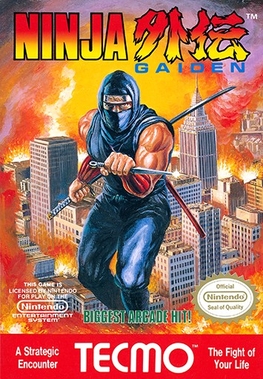
Ninja Gaiden, released in Japan as Ninja Ryūkenden and as Shadow Warriors in Europe, is an action-platform video game developed and published by Tecmo for the Nintendo Entertainment System. Its development and release coincided with the beat 'em up arcade version of the same name. It was released in December 1988 in Japan, in March 1989 in North America, and in August 1991 in Europe. It has been ported to several other platforms, including the PC Engine, the Super NES, and mobile phones.
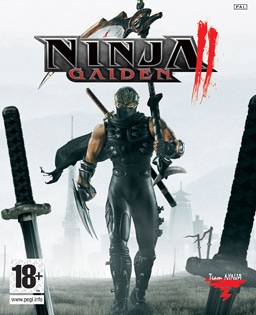
Ninja Gaiden II is a 2008 action adventure hack and slash game developed by Team Ninja and published by Microsoft Game Studios for the Xbox 360. It is the sequel to the 2004 title Ninja Gaiden, making it the second 3D title in the series of the same name, and was released worldwide in June 2008. A reimagined and heavily altered version, titled Ninja Gaiden Sigma 2 was released for the PlayStation 3 later in 2009, and was published by Tecmo Koei, followed by Ninja Gaiden Sigma 2 Plus for the PlayStation Vita in 2013.
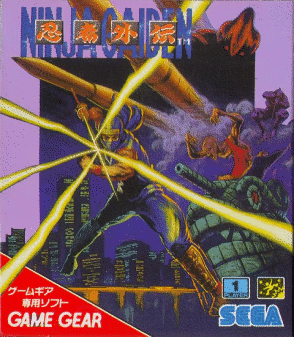
Ninja Gaiden (忍者外伝) is an action video game released for the Game Gear in 1991 by Sega with license from Tecmo. It stars Ryu Hayabusa and is part of the Ninja Gaiden series, although it features a plot not connected to any of the other Ninja Gaiden games. The gameplay is similar to previous Ninja Gaiden games where the player jumps between platforms defeating and avoiding enemies.

Guitar Hero: On Tour is a series of music video games based on the Guitar Hero series for the Nintendo DS handheld game system. The series is developed by Vicarious Visions and published by Activision. Three games in the series have been released since June 2008: Guitar Hero: On Tour, Guitar Hero On Tour: Decades, and Guitar Hero On Tour: Modern Hits.

Ninja Gaiden Sigma 2, stylized as Ninja Gaiden Σ2, is a port of the 2008 Xbox 360 video game Ninja Gaiden II, and was developed by Team Ninja exclusively for the PlayStation 3 in 2009. It includes the entirety of the original story mode as well as various changes to the game's design, along with updated textures and a 720p resolution. The game changes Ninja Gaiden II in a similar, but not identical way to how Ninja Gaiden Sigma changed the original Ninja Gaiden. A port for the PlayStation Vita, titled Ninja Gaiden Sigma 2 Plus, was released in 2013.

Dead or Alive: Dimensions is a fighting game developed by Team Ninja and released by Tecmo Koei and in some regions by Nintendo for the Nintendo 3DS in 2011. Originally planned as a launch title for the 3DS but delayed due to 2011 Tōhoku earthquake and tsunami, DOAD makes use of the console's unique features. The game was well received by critics.
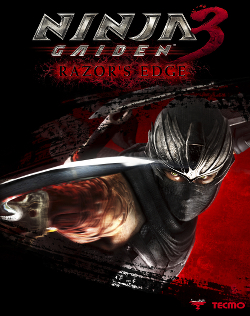
Ninja Gaiden 3: Razor's Edge is a 2012 action adventure hack and slash game developed by Team Ninja and published by Nintendo. It was released for the Wii U from November 2012 to May 2013, and subsequently released by Tecmo Koei for the PlayStation 3 and Xbox 360 in April 2013. It is an enhanced port of Ninja Gaiden 3 that includes all downloadable content from the original title, as well as additional enhancements made to improve the game. The game can be considered an equivalent to the Ninja Gaiden Sigma games, as it makes several changes to the original title.
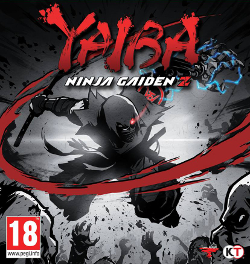
Yaiba: Ninja Gaiden Z is an action adventure hack and slash game, and a spin-off of the Ninja Gaiden franchise. It was published by Tecmo Koei and developed by Spark Unlimited. Comcept's Keiji Inafune conceptualized the game, providing character designs and creating the character of Yaiba. The game was released for the PlayStation 3, Xbox 360, and Microsoft Windows worldwide in March 2014.

Dead or Alive 5 Ultimate is a fighting game in the Dead or Alive series, developed by Team Ninja, and released by Tecmo Koei for the PlayStation 3 and Xbox 360 in September 2013. It was followed by an arcade edition later in 2013. It is the first arcade game to be released by Koei Tecmo since Dead or Alive 2 Millenium in 2000.

















